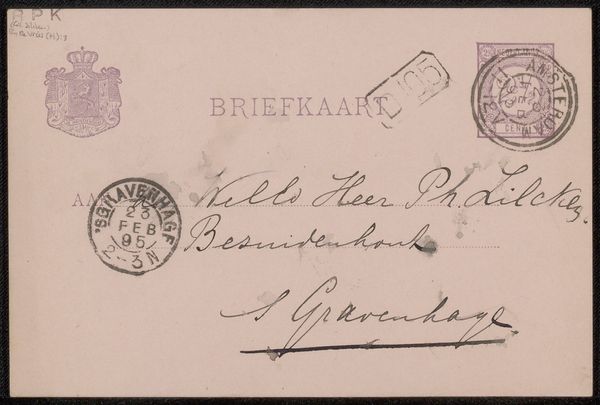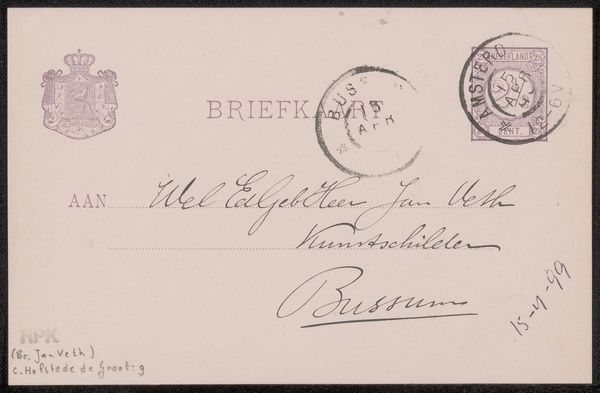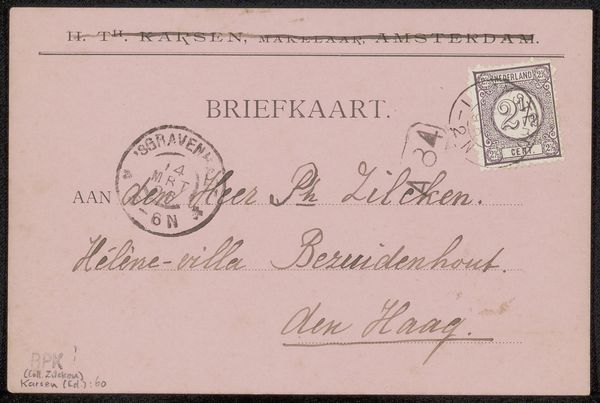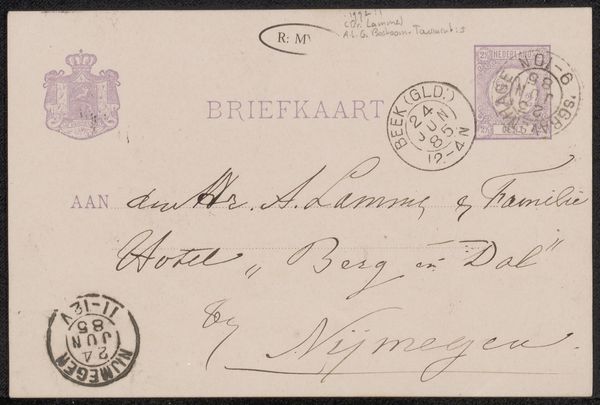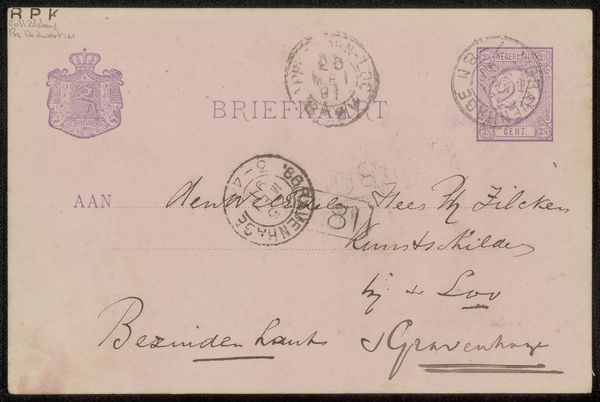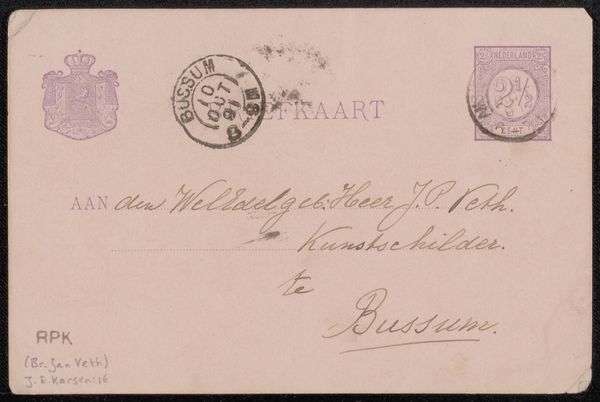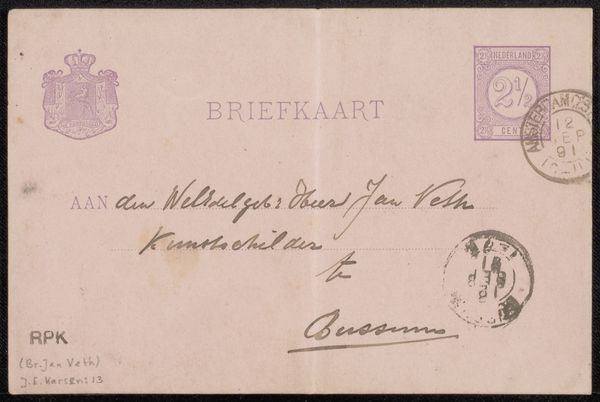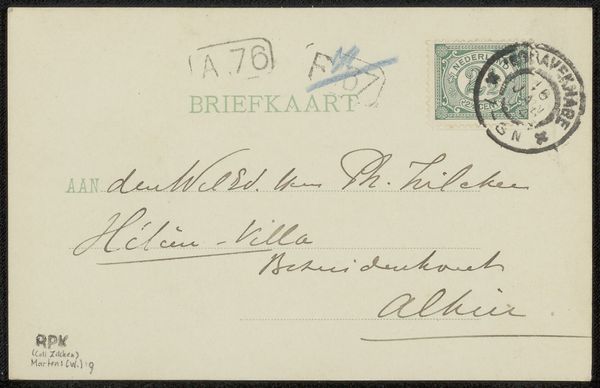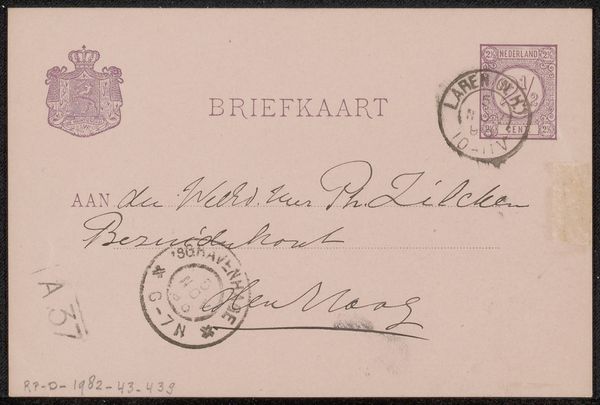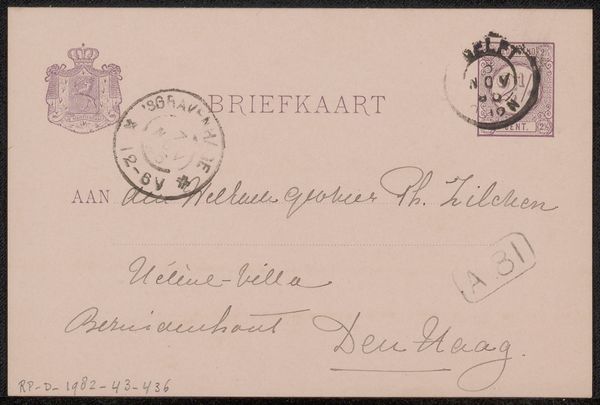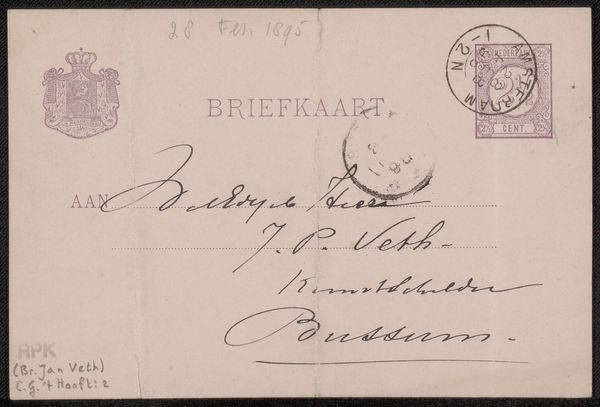
#
portrait
# print
#
post-impressionism
Copyright: Rijks Museum: Open Domain
Curator: Here we have “Briefkaart aan Philip Zilcken,” possibly from 1894, created by Jacob Nicolaas van Hall. It's a printed postcard. Editor: Well, isn't it lovely? It’s so delicate—almost like a faded memory. The aged paper and faint writing give it such an intimate feel. Curator: Absolutely. Van Hall was corresponding with the art critic Philip Zilcken, probably to engage with the vibrant artistic circles of Brussels, a critical part of building his reputation and securing commissions. Correspondence played a key role in artistic networking. Editor: Look at the postal stamps. They provide evidence of transit; that the material itself actually traveled to a different location, creating a link to the person meant to receive it. You almost wonder what paper stock was common for personal correspondence like this at the time. Curator: Interesting observation! Correspondence could reveal status too, depending on paper quality and how a person used and displayed his letters—both key social signifiers in those times. Editor: Yes, consider the very act of handwriting and penmanship itself; at a time when it was giving way to other technologies. I wonder about the materials used to produce the printed "briefkaart", versus that of handwriting in ink. Was one preferred for sending to people of stature, or in more personal moments? Curator: That’s precisely what makes this so fascinating. The convergence of emerging printing technologies with deeply entrenched social protocols is quite compelling. Editor: I think it is a testament to an era, of artists actively leveraging expanding networks and infrastructures. Thank you, now, I appreciate this small print and delicate gesture even more. Curator: Indeed! It reveals layers about artmaking as both a commercial venture and a profoundly social act in Van Hall's time.
Comments
No comments
Be the first to comment and join the conversation on the ultimate creative platform.
